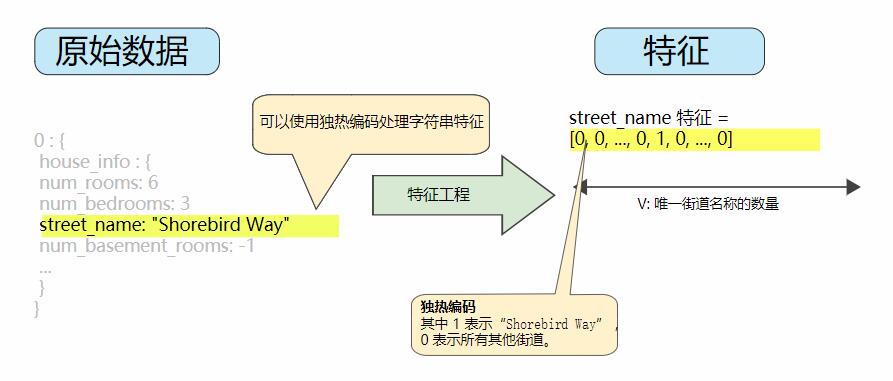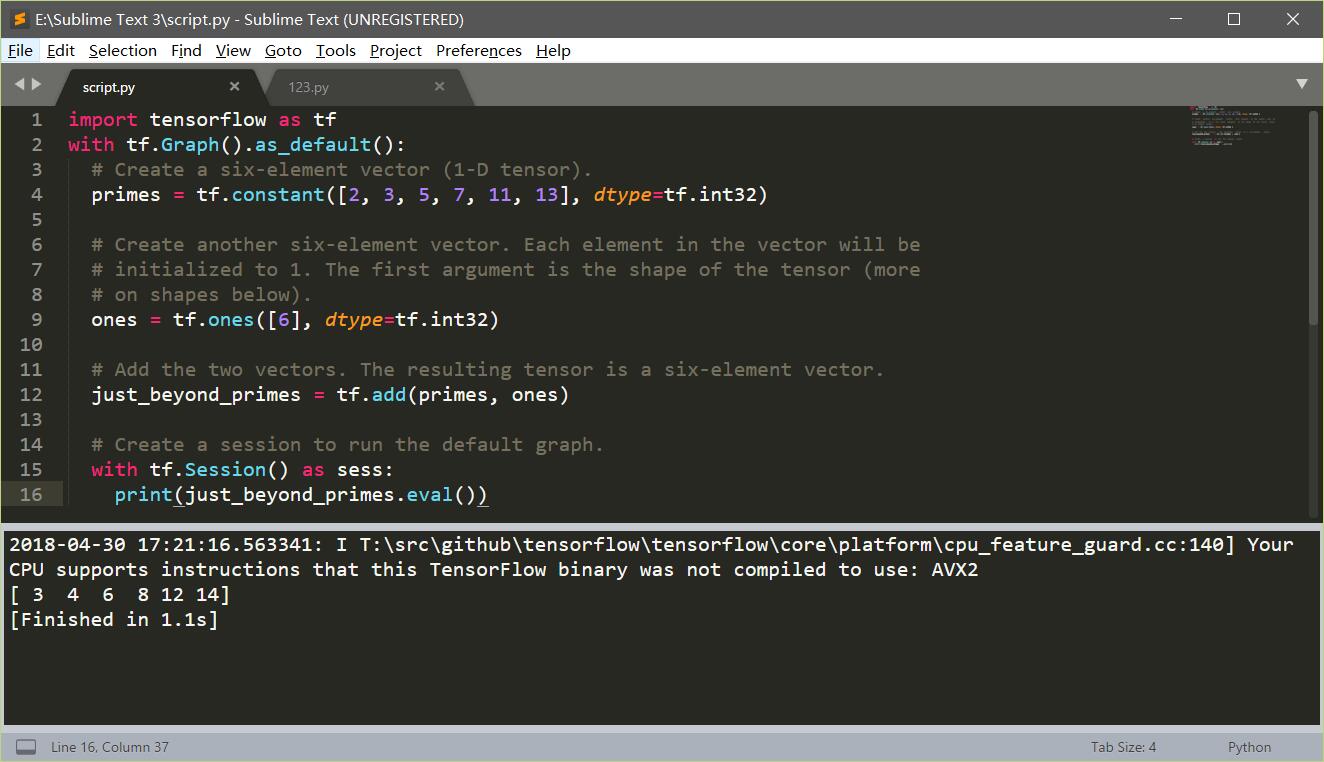文章说明:
1)参考资料:PYG的文档。超链。斯坦福大学的机器学习课程。超链。(应该要挂梯子)。博客原文。超链。(应该要挂梯子)。原文理论参考文献。超链。提取码8848。
2)我在百度网盘上传这篇文章jupyter notebook和预训练模型。超链。提取码8848.
3)博主水平不高,如有错误,还望批评指正
一些建议:注重理论建议直接去看文献;注重实践建议直接去看代码。他的代码会有详细注释,但实际没啥用,如果不看原文参考文献。建议手敲一遍代码,会对理解很有帮助。变量名字取得很好,如果有图神经基础,不看文献也是可以。
文章目录
- 前言1:硬件问题
- 前言2:有关综述
- 数据描述
- 数据下载
- 任务描述
- 代码演示
前言1:硬件问题
如果电脑不是很好,并不建议自己训练。我的电脑不是很好,训练大概有20分钟。最后电脑特别的烫,感觉对电脑很不好。我的电脑配置如下(应该是看这个,对于硬件我不清楚)。直接下载预训练的模型就好。
前言2:有关综述
对于一般图像分割以及图像分类任务,卷积神经网络取得巨大成功。但是卷积神经网络不能处理不规则的数据结构。我们希望推广卷积神经网络到不规则数据结构。卷积神经网络博主不很了解,不所以作过多评价。图神经网络为解决问题,应孕而生。我们使用3D点云进行演示。
数据描述
我们使用两个矩阵表示数据:十分简单,看图易懂。图片自源博客。我们需要一个矩阵存储n个点的位置。我们需要一个矩阵存储点间的边关系(3点确定一个平面,这就解释为什么是3个点了)。

数据下载
超链。
任务描述
正如标题:一个简单分类任务。我们需要对3D点云进行分类。头部点云,躯干点云,左臂点云,左手点云,右臂点云,右手点云,左大腿点云,左小腿点云,左脚点云,右大腿点云,右小腿点云,右脚点云。
代码演示
import torch
device='cuda' if torch.cuda.is_available() else 'cpu'
路径有关注意事项1:下载数据之后不要进行解压,放在一个文件之中就可以了。
路径有关注意事项2:复制文件地址需要进行修改,可能这跟操作系统有关但是我不清楚,我就只说我的。直接复制是这样"C:\Users\19216\Desktop\project\3DImage_Classification_And_Segmentation",我们需要更改所有"\“变为”/"。
root="C:/Users/19216/Desktop/project/3DImage_Classification_And_Segmentation"
以下定义数据变换。
from torch_geometric.transforms import BaseTransform
from torch_geometric.data import Data
#BaseTransform的构造十分简单,建议自己去看源码
class NormalizeUnitSphere(BaseTransform):
#静态方法,不依赖类(加了这个应该就不用加self了)
@staticmethod
def _re_center(x):
centroid=torch.mean(x,dim=0)
return x-centroid
@staticmethod
def _re_scale_to_unit_length(x):
max_dist=torch.max(torch.norm(x,dim=1))
return x/max_dist
#类的默认调用方法
def __call__(self,data:Data):
if data.x is not None:
data.x=self._re_scale_to_unit_length(self._re_center(data.x))
return data
#就是打印类的名字
def __repr__(self):
return "{}()".format(self.__class__.__name__)
from torch_geometric.transforms import Compose,FaceToEdge
pre_transform=Compose([FaceToEdge(remove_faces=False),NormalizeUnitSphere()])
以下加载变换数据。
from pathlib import Path
import trimesh
def load_mesh(mesh_filename:Path):
mesh=trimesh.load_mesh(mesh_filename,process=False)
vertices=torch.from_numpy(mesh.vertices).to(torch.float)
faces=torch.from_numpy(mesh.faces).t().to(torch.long).contiguous()
return vertices,faces
from torch_geometric.data import InMemoryDataset,extract_zip
from functools import lru_cache
import numpy as np
关于这部分的代码,必须看这,看了你就知道了吧。这里代码逻辑是挺有意思的,由于篇幅原因读者自行研究。我来讲下逻辑,不一定正确哈。首先train_data申请调用SegmentationFaust。父类立马开始调用四个方法(如果没有直接跳过) raw_file_names(),processed_file_names(),download(),process()。具体到这里就只有processed_file_names()、process()。父类发现文件夹中没有processed_file_names()的对应文件,立即用process()处理数据生成processed_file_names()的对应文件。然后赋值[“training.pt”,“test.pt”]给self.processed_paths。最后子类开始运作读取数据并且赋值。所有数据在第一步处理好了。
class SegmentationFaust(InMemoryDataset):
map_seg_label_to_id=dict(head=0,torso=1,left_arm=2,left_hand=3,
right_arm=4,right_hand=5,left_upper_leg=6,left_lower_leg=7,
left_foot=8,right_upper_leg=9,right_lower_leg=10,right_foot=11)
def __init__(self,root,train:bool=True,pre_transform=None):
super().__init__(root,pre_transform)
path=self.processed_paths[0] if train else self.processed_paths[1]
self.data,self.slices=torch.load(path)
#将方法转换为属性
@property
def processed_file_names(self)->list:
return ["training.pt","test.pt"]
@property
#结果缓存,提高效率
@lru_cache(maxsize=32)
def _segmentation_labels(self):
path_to_labels=Path(self.root)/"MPI-FAUST"/"segmentations.npz"
seg_labels=np.load(str(path_to_labels))["segmentation_labels"]
return torch.from_numpy(seg_labels).type(torch.int64)
def _mesh_filenames(self):
path_to_meshes=Path(self.root)/"MPI-FAUST"/"meshes"
#正则匹配
return path_to_meshes.glob("*.ply")
def _unzip_dataset(self):
path_to_zip=Path(self.root)/"MPI-FAUST.zip"
extract_zip(str(path_to_zip),self.root,log=False)
def process(self):
self._unzip_dataset()
data_list=[]
for mesh_filename in sorted(self._mesh_filenames()):
vertices, faces=load_mesh(mesh_filename)
data=Data(x=vertices, face=faces)
data.segmentation_labels=self._segmentation_labels
if self.pre_transform is not None:
data=self.pre_transform(data)
data_list.append(data)
torch.save(self.collate(data_list[:80]),self.processed_paths[0])
torch.save(self.collate(data_list[80:]),self.processed_paths[1])
train_data=SegmentationFaust(root=root,pre_transform=pre_transform)
#输出:
#Processing...
#Done!
test_data=SegmentationFaust(root=root,train=False,pre_transform=pre_transform)
from torch_geometric.loader import DataLoader
train_loader=DataLoader(train_data,shuffle=True)
test_loader=DataLoader(test_data,shuffle=False)
from itertools import tee
这段代码特别抽象,读者自行理解研究(我的意思语法抽象不指代码逻辑)
def pairwise(iterable):
a,b=tee(iterable)
next(b,None)
return zip(a,b)
import torch.nn as nn
这段代码同样抽象,读者自行理解研究(我的意思语法抽象不指代码逻辑)
def get_mlp_layers(channels:list,activation,output_activation=nn.Identity):
layers=[]
*intermediate_layer_definitions,final_layer_definition=pairwise(channels)
for in_ch,out_ch in intermediate_layer_definitions:
intermediate_layer=nn.Linear(in_ch,out_ch)
layers+=[intermediate_layer,activation()]
layers+=[nn.Linear(*final_layer_definition),output_activation()]
return nn.Sequential(*layers)
from torch_geometric.nn import MessagePassing
def get_conv_layers(channels:list,conv:MessagePassing,conv_params:dict):
conv_layers=[conv(in_ch,out_ch,**conv_params) for in_ch,out_ch in pairwise(channels)]
return conv_layers
from torch_geometric.utils import add_self_loops,remove_self_loops
import torch.nn.functional as F
最后介绍参考论文,这里暂时放下不表
以下部分均为模型建立
class FeatureSteeredConvolution(MessagePassing):
def __init__(self,in_channels:int,out_channels:int,num_heads:int,ensure_trans_invar:bool=True,bias:bool=True,with_self_loops:bool=True):
super().__init__(aggr="mean")
self.in_channels=in_channels;self.out_channels=out_channels;self.num_heads=num_heads;self.with_self_loops=with_self_loops
self.linear=torch.nn.Linear(in_features=in_channels,out_features=out_channels*num_heads,bias=False)
self.u=torch.nn.Linear(in_features=in_channels,out_features=num_heads,bias=False)
self.c=torch.nn.Parameter(torch.Tensor(num_heads))
if not ensure_trans_invar:
self.v=torch.nn.Linear(in_features=in_channels,out_features=num_heads,bias=False)
else:
self.register_parameter("v",None)
if bias:
self.bias=torch.nn.Parameter(torch.Tensor(out_channels))
else:
self.register_parameter("bias",None)
self.reset_parameters()
def reset_parameters(self):
torch.nn.init.uniform_(self.linear.weight)
torch.nn.init.uniform_(self.u.weight)
torch.nn.init.normal_(self.c,mean=0.0,std=0.1)
if self.v is not None:
torch.nn.init.uniform_(self.v.weight)
if self.bias is not None:
torch.nn.init.normal_(self.bias,mean=0.0,std=0.1)
def forward(self,x,edge_index):
if self.with_self_loops:
edge_index,_=remove_self_loops(edge_index)
edge_index,_=add_self_loops(edge_index=edge_index,num_nodes=x.shape[0])
out=self.propagate(edge_index,x=x)
return out if self.bias is None else out+self.bias
def _compute_attention_weights(self,x_i,x_j):
if x_j.shape[-1]!=self.in_channels:
raise ValueError(
f"Expected input features with {self.in_channels} channels."
f"Instead received features with {x_j.shape[-1]} channels."
)
if self.v is None:
attention_logits=self.u(x_i-x_j)+self.c
else:
attention_logits=self.u(x_i)+self.b(x_j)+self.c
return F.softmax(attention_logits,dim=1)
def message(self,x_i,x_j):
attention_weights=self._compute_attention_weights(x_i,x_j)
x_j=self.linear(x_j).view(-1,self.num_heads,self.out_channels)
return (attention_weights.view(-1,self.num_heads,1)*x_j).sum(dim=1)
class GraphFeatureEncoder(torch.nn.Module):
def __init__(self,in_features,conv_channels,num_heads,apply_batch_norm:int=True,ensure_trans_invar:bool=True,bias:bool=True,with_self_loops:bool=True):
super().__init__()
self.apply_batch_norm=apply_batch_norm;conv_params=dict(num_heads=num_heads,ensure_trans_invar=ensure_trans_invar,bias=bias,with_self_loops=with_self_loops)
conv_layers=get_conv_layers(channels=[in_features]+conv_channels,conv=FeatureSteeredConvolution,conv_params=conv_params)
self.conv_layers=nn.ModuleList(conv_layers)
*first_conv_channels,final_conv_channel=conv_channels
self.batch_layers=[None for _ in first_conv_channels]
if apply_batch_norm:
self.batch_layers=nn.ModuleList([nn.BatchNorm1d(channel) for channel in first_conv_channels])
def forward(self,x,edge_index):
*first_conv_layers,final_conv_layer=self.conv_layers
for conv_layer,batch_layer in zip(first_conv_layers,self.batch_layers):
x=conv_layer(x,edge_index)
x=F.relu(x)
if batch_layer is not None:
x=batch_layer(x)
return final_conv_layer(x,edge_index)
class MeshSeg(torch.nn.Module):
def __init__(self,in_features,encoder_features,conv_channels,encoder_channels,decoder_channels,num_heads,num_classes,apply_batch_norm=True):
super().__init__()
self.input_encoder=get_mlp_layers(channels=[in_features]+encoder_channels,activation=nn.ReLU)
self.gnn=GraphFeatureEncoder(in_features=encoder_features,conv_channels=conv_channels,num_heads=num_heads,apply_batch_norm=apply_batch_norm)
*_,final_conv_channel=conv_channels
self.final_projection=get_mlp_layers([final_conv_channel]+decoder_channels+[num_classes],activation=nn.ReLU)
def forward(self,data):
x,edge_index=data.x,data.edge_index
x=self.input_encoder(x)
x=self.gnn(x,edge_index)
return self.final_projection(x)
设定参数
model_params=dict(in_features=3,encoder_features=16,conv_channels=[32,64,128,64],encoder_channels=[16],decoder_channels=[32],num_heads=12,num_classes=12,apply_batch_norm=True)
net=MeshSeg(**model_params).to(device)
best_test_acc=0.0;num_epochs=50;lr=0.001;optimizer=torch.optim.Adam(net.parameters(),lr=lr);loss_fn=torch.nn.CrossEntropyLoss()
开始训练
def train(net,train_data,optimizer,loss_fn,device):
net.train()
cumulative_loss=0.0
for data in train_data:
data=data.to(device)
optimizer.zero_grad()
out=net(data)
loss=loss_fn(out,data.segmentation_labels.squeeze())
loss.backward()
cumulative_loss+=loss.item()
optimizer.step()
return cumulative_loss/len(train_data)
def accuracy(predictions,gt_seg_labels):
predicted_seg_labels=predictions.argmax(dim=-1,keepdim=True)
if predicted_seg_labels.shape!=gt_seg_labels.shape:
raise ValueError("Expected Shapes to be equivalent")
correct_assignments=(predicted_seg_labels==gt_seg_labels).sum()
num_assignemnts=predicted_seg_labels.shape[0]
return float(correct_assignments/num_assignemnts)
def evaluate_performance(dataset,net,device):
prediction_accuracies=[]
for data in dataset:
data=data.to(device)
predictions=net(data)
prediction_accuracies.append(accuracy(predictions,data.segmentation_labels))
return sum(prediction_accuracies)/len(prediction_accuracies)
@torch.no_grad()
def test(net,train_data,test_data,device):
net.eval()
train_acc=evaluate_performance(train_data,net,device)
test_acc=evaluate_performance(test_data,net,device)
return train_acc,test_acc
from tqdm import tqdm
with tqdm(range(num_epochs),unit="Epoch") as tepochs:
for epoch in tepochs:
train_loss=train(net,train_loader,optimizer,loss_fn,device)
train_acc,test_acc=test(net,train_loader,test_loader,device)
tepochs.set_postfix(train_loss=train_loss,train_accuracy=100*train_acc,test_accuracy=100*test_acc)
if test_acc>best_test_acc:
best_test_acc=test_acc
torch.save(net.state_dict(),root+"/checkpoint_best_colab")
开始画图
def load_model(model_params,path_to_checkpoint,device):
try:
model=MeshSeg(**model_params)
model.load_state_dict(torch.load(str(path_to_checkpoint)),strict=True)
model.to(device)
return model
except RuntimeError as err_msg:
raise ValueError(
f"Given checkpoint {str(path_to_checkpoint)} could not be loaded. {err_msg}"
)
def get_best_model(model_params,device):
path_to_trained_model=Path(root+"/checkpoint_best_colab")
trained_model=load_model(model_params,path_to_trained_model,device)
return trained_model
net=get_best_model(model_params,device)
segmentation_colors=dict(head=torch.tensor([255,255,255],dtype=torch.int),torso=torch.tensor([255,255,128],dtype=torch.int),
left_arm=torch.tensor([255,255,0],dtype=torch.int),left_hand=torch.tensor([255,128,255],dtype=torch.int),
right_arm=torch.tensor([255,128,128],dtype=torch.int),right_hand=torch.tensor([255,128,0],dtype=torch.int),
left_upper_leg=torch.tensor([255,0,255],dtype=torch.int),left_lower_leg =torch.tensor([255,0,128],dtype=torch.int),
left_foot=torch.tensor([255,0,0],dtype=torch.int),right_upper_leg=torch.tensor([128,255,255],dtype=torch.int),
right_lower_leg=torch.tensor([128,255,128],dtype=torch.int),right_foot=torch.tensor([128,255,0],dtype=torch.int)
)
map_seg_id_to_color=dict((_value,segmentation_colors[_key]) for _key,_value in train_data.map_seg_label_to_id.items())
@torch.no_grad()
def visualize_prediction(net,data,device,map_seg_id_to_color):
def _map_seg_label_to_color(seg_ids,map_seg_id_to_color):
return torch.vstack([map_seg_id_to_color[int(seg_ids[idx])] for idx in range(seg_ids.shape[0])])
data=data.to(device)
predictions=net(data)
predicted_seg_labels=predictions.argmax(dim=-1,keepdim=True)
mesh_colors=_map_seg_label_to_color(predicted_seg_labels, map_seg_id_to_color)
segmented_mesh=trimesh.base.Trimesh(vertices=data.x.cpu().numpy(),faces=data.face.t().cpu().numpy(),process=False)
segmented_mesh.visual.vertex_colors=mesh_colors.cpu().numpy()
return segmented_mesh
segmented_meshes=[]
mesh_ids=[0,1,2,3,4,5,6,7,8,9]
for idx,mesh_id in enumerate(mesh_ids):
segmented_mesh=visualize_prediction(net,test_data[mesh_id],device,map_seg_id_to_color)
segmented_mesh.vertices+=[idx*1.0,0.0,0.0]
segmented_meshes.append(segmented_mesh)
scene=trimesh.scene.Scene(segmented_meshes)
scene.show()

论文部分不想写了。以后再来吧,那就这样吧。



